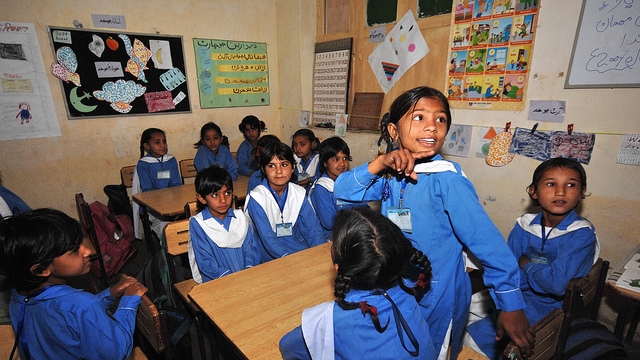In developing countries, private schools that keep their fees low to target poor families often offer better education than public schools. But in Pakistan, several external conditions are constraining the growth of these private schools and effectiveness, including access to credit and technical resources. Researchers will seek to overcome these constraints by implementing a project that offers three models of financial support to schools: grants, loans, and equity financing.
Research area: |
Education |
Country: |
Pakistan |
Evaluation sample: |
About 2,000 schools in some 650 villages in Punjab, Pakistan |
Timeline: |
2012-2016 (Completed) |
Intervention: |
Grants, micro-loans, private schools |
Researchers: |
Tahir Andrabi, Pomona College; Asim Khwaja, Harvard University; Jishnu Das, World Bank |
Partners: |
Centre for Economic Research in Pakistan; Aman Foundation; Tameer Microfinance Bank Ltd.; Research Consultants; Pomona College; Harvard University |
Results:
|
The evaluation found that when all schools in a village received a grant, children’s test scores went up, as did enrollment and profits. In villages where only one school received a grant, money was mainly used on infrastructure and, while enrollment and profits went up, students didn’t learn more. |
Problem
While private schools can be a boon in low-income countries for students looking for low-cost, quality education – and help relieve pressure on governments that are too constrained to expand educational opportunities – these schools often have trouble getting loans or attracting investment to expand and improve services. The issue is especially relevant in Pakistan, where about a third of students attend private schools that set their fees low enough to attract poor families.
Since 1980, the number of private schools in Pakistan has grown from about 3,000 to about 45,000. A 2001 survey showed that about one in five of Pakistan’s poorest families sends their children to private village schools.
Children in these private schools tend to outperform those in public schools, while costs per student can be 20 to 50 percent lower than those in public schools, generally because these private schools hire less-qualified local teachers at lower wages. Despite these advantages, private school growth may be limited by the lack of financing possibilities. This evaluation assesses the benefits of different financing models for encouraging school expansion.
